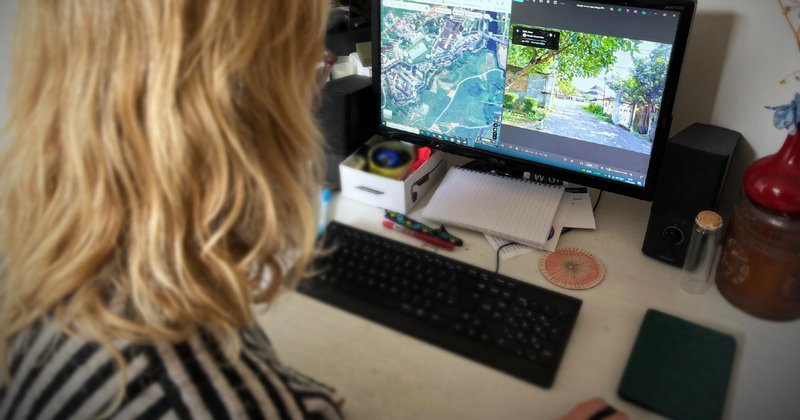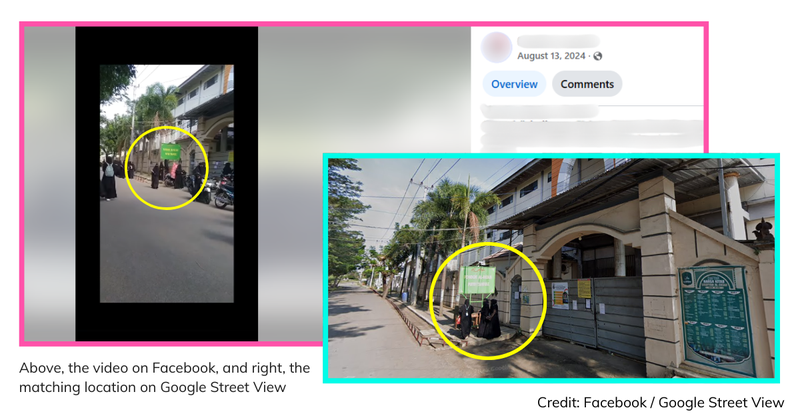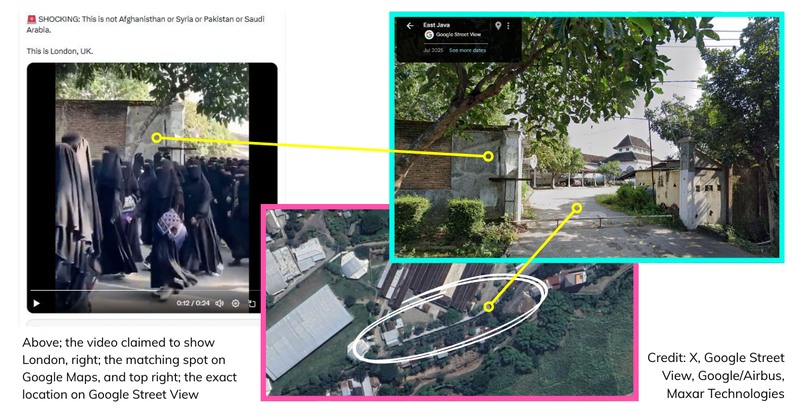From London to Java: how AI helped us locate a viral video’s true origin
This week, we found a video posted on X of a crowd of women wearing niqabs (a veil worn by some Muslim women which covers their entire body and face, except their eyes) walking past a tall brick wall. The caption said this was filmed in London.
We suspected that this was not actually the case, although at first glance, there was not much in the footage to dispute the claim it was filmed in the UK.
All that could be seen in the background was the end of a wall, trees, and some blurry buildings in the distance.
Join 72,953 people who trust us to check the facts
Sign up to get weekly updates on politics, immigration, health and more.
Subscribe to weekly email newsletters from Full Fact for updates on politics, immigration, health and more. Our fact checks are free to read but not to produce, so you will also get occasional emails about fundraising and other ways you can help. You can unsubscribe at any time. For more information about how we use your data see our Privacy Policy.
Step one: reverse image search
Our first point of call when trying to geolocate images or footage is what we do to all visual media we fact check at Full Fact—a reverse image search using either the picture or key stills from a video. Finding the oldest result often reveals its original source and the context in which it was first shared.
But in this case, directly reverse image searching through Google took me to a TikTok video with a location marker for ‘Pondok Pesantren Al Fatah Temboro’, in Indonesia.

An internet search revealed that Al Fatah Temboro is an Islamic boarding school (such schools are known in Indonesia as a ‘pesantren’) located in Temboro on the island of Java—not London, as the posts were claiming. A crowd of this size wearing niqabs is not unusual in this context; Indonesia has a large Muslim population.
Can AI help geolocate?
But at this stage of the fact check, it is still one account’s attribution against another. What we really needed was to match the same site shown in the video with a map location to definitely confirm that it was filmed in Indonesia rather than the UK.
We found a slightly different compilation of similar videos on Facebook, seemingly from the same area, also with women in Islamic dress, but with more geographical features visible, such as a sign and clearer views of buildings.
Using stills from this video as references, we asked the AI chatbot ChatGPT if it could provide coordinates to the location, using the possible location of the Al Fatah school in Indonesia.
An investigation by open source research experts at Bellingcat earlier this year found that AI tools can be a supportive tool for geolocating images, although this isn’t an open goal, as they can still hallucinate (when a model generates false or conflicting information, often presented confidently) and provide wrong answers. In this investigation, we double-checked everything it told us.
Using the coordinates provided by ChatGPT, we were able to find a Google Street View match for the location shown in one of the other clips in the compilation—outside the gates to dormitories for the Al-Fatah school.

But this did not match the location of the original video we were trying to fact check—or anywhere in the near vicinity. While we were very confident the video had been filmed in Temboro, we needed to investigate further to prove this.
There were few identifying features in the clip being shared, and not enough to go on for ChatGPT, or other Large Language Models we tested to provide matching coordinates.
But there was a wall, with an entrance point at an angle, and trees lining a street. Using higher quality clips of the same location, we could also identify a tiled building in the background with green lintels around the windows, and concluded that the street the women were walking into was fairly straight.
Finding the match
We cross-referenced these features with satellite imagery of Temboro and identified a matching street on the east of the school campus. When we looked at Google Street View for this road, it was a perfect match. After hours of feeling like you’re searching in the dark with a blindfold on, this tangible proof is a fist-pump moment for us fact checkers.

Why this work matters
It only takes seconds for miscaptioned footage like this to gain traction, while the process of finding the truth can be much more time consuming, and may not be possible for a casual internet user.
This is why professional fact checkers in Full Fact’s News and Online team are vital when it comes to stemming the tide of misinformation on the internet by publicly debunking such clips.